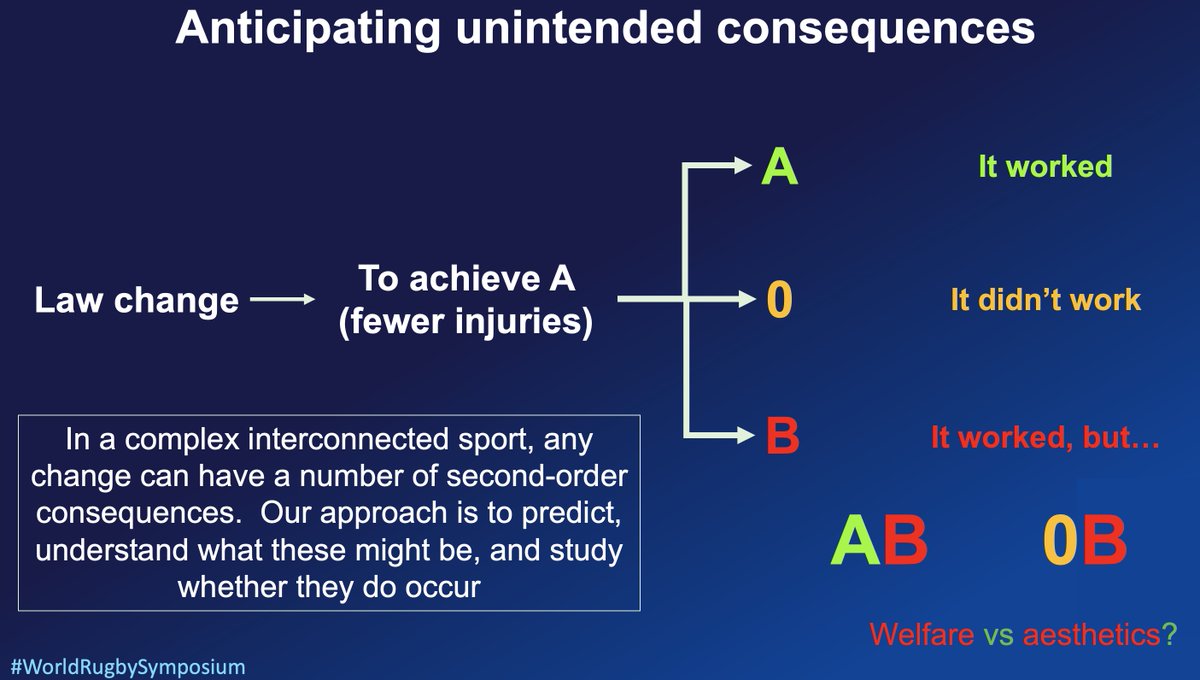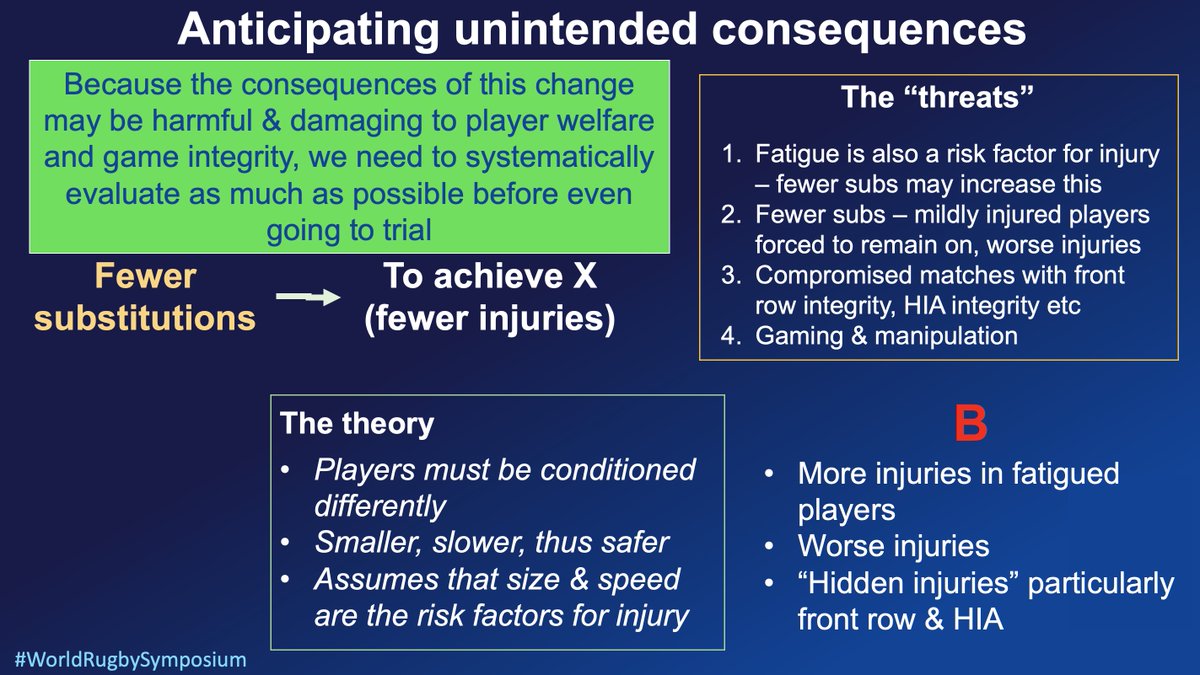The focus is on evidence, not emotion. And it’s about being as systematic as possible, relying on data, freed from “side of the field” bias, which means:
- Identifying problems
- Understanding the cause
- Seeking solutions from experts
- Ongoing evaluation
- Identifying problems
- Understanding the cause
- Seeking solutions from experts
- Ongoing evaluation

The biggest challenges are:
- How do you know if it worked?
- How do you know if it caused a set of unintended consequences that are undesired?
Trying to understand those in a complex, dynamic environment is challenging. Too many “simple” solutions offered without thought of “B"
- How do you know if it worked?
- How do you know if it caused a set of unintended consequences that are undesired?
Trying to understand those in a complex, dynamic environment is challenging. Too many “simple” solutions offered without thought of “B"

Classic example now is the desire to limit substitution numbers. It’s easy to understand the theory for why you’d want this. It’s less obvious to consider that it *might* make things worse, or replace one issue with another, depending on what creates injury risk (fatigue vs size) 

Another great example was head injury risk. Once we’d found, pretty clearly, that:
- The player most at risk is the tackler,
- The risk is higher for upright tacklers & higher contacts,
the approach to focus on law (as advised by expert coaches) was meant to carry a MESSAGE
- The player most at risk is the tackler,
- The risk is higher for upright tacklers & higher contacts,
the approach to focus on law (as advised by expert coaches) was meant to carry a MESSAGE

That message would be carried by sanction, its intention being to change A (high risk) into B (low risk), or to modify A through better technique, as illustrated below. The alternative is total removal of the risky behaviour, which is what comes if this doesn’t work. 

In this instance, the principle is informed by evidence, and is really simple:
- Protect the BC by avoiding their head as much as possible;
- Protect the tackler by ensuring the head is in the least risky position possible
This means appreciating the root issue - head contact
- Protect the BC by avoiding their head as much as possible;
- Protect the tackler by ensuring the head is in the least risky position possible
This means appreciating the root issue - head contact

Naturally, there will be unavoidable head contact in the sport. The issue is whether it’s high risk or not? We knew where risk was higher - evidence was clear. It just wasn't always what was thought to be obvious. This was a great illustration of “intuition/emotion” vs evidence 

More on this in the video, including some other explanations and examples of how the sport is trying to manage risk without creating new (or returning to old) problems: vimeo.com/531690887
• • •
Missing some Tweet in this thread? You can try to
force a refresh













